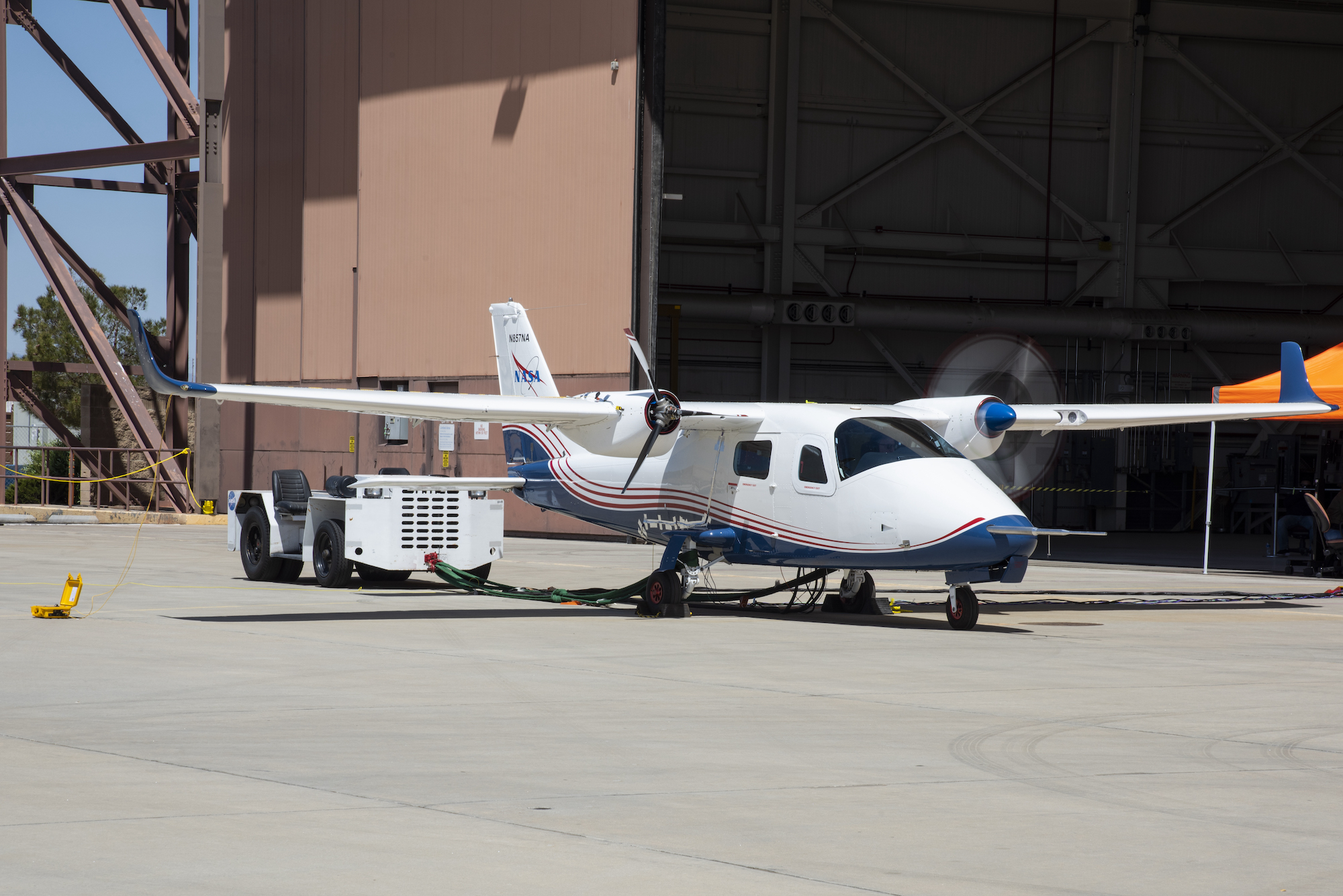

NASA said today in a conference call with reporters that it would not ever be flying its experimental electric aircraft, the X-57, citing safety concerns that are insurmountable with the time and budget they have for the project. The X-57 program will wind down without the aircraft ever going up into the sky.
The agency had previously hoped to fly the aircraft, which would be powered by batteries and electric motors, sometime this year. While the original plans had called for the research plane to eventually have more than a dozen propellers, NASA had scaled back those plans too, intending to fly the plane in what they called Modification 2 form. Mod 2 involved the plane having just two propellers, with one on each wing. The news today means that the plane will never fly, not even in Mod 2 form.
NASA said that the reason behind permanently scrubbing the flight is safety and time. “Unfortunately, we recently discovered a potential failure mode in the propulsion system that we determined to pose an unacceptable risk to the pilot’s safety, and the safety of personnel on the ground, during ground tests,” Bradley Flick, the director of NASA’s Armstrong Flight Research Center in California, said in the call. “Mitigation of that failure would take the project well beyond its planned end at the end of this fiscal year, so NASA has decided to end the project on time without taking the vehicle to flight.”
[Related: NASA’s ‘airliner of the future’ is now officially an X-plane]
The project had previously seen challenges. For example, transistor modules in the electrical inverters kept failing and “blowing up” in testing, Sean Clark, the project’s principal investigator told Popular Science in January. That problem was solved, Clark said.
The problem that led them to scrap the plan to fly the aircraft stemmed from motors that power the propellers. Clark said today that analysis of the issue is ongoing. “As we got into the detailed analysis and airworthiness assessment of the motors themselves, we found that there were some potential failure modes with the motors mechanically, under flight loads, that we hadn’t seen on the ground,” he said. “We’ve got a great design in progress to fix it, it’s just [that] it would take too long for us to go through and implement that.”
The NASA team emphasized that they are still proud of the ways in which they’ve contributed openly to the broader industry—private companies continue to work on electric flight—pointing towards a raft of technical papers. “It doesn’t feel great to not go to flight,” Flick conceded. The sense of disappointment, he added, doesn’t lessen “the game-changing lessons that this project team has contributed to the industry.”
NASA has two other X-plane programs in the works—a designation that means that the aircraft is experimental and for research, and that comes from the Department of Defense. (The X-57 received its X designation in 2016.) One of the others is the X-59, which NASA intends to fly this year, hopefully demonstrating that supersonic flight can be quieter than it has been in the past. The other is the newly-designated X-66A, which is also called the Sustainable Flight Demonstrator. The current timeline for that plane has it flying in 2028.
Flick cautiously estimated that if they had more budget and more time to get the X-57 aircraft into the sky, they could have potentially done so safely. “We have a design that would have overcome the current difficulty that we’ve had—it has not been fully analyzed and reviewed yet,” he added. “We were confident that it could have solved this problem. Whether there were other problems out there that we haven’t discovered yet is unknown.”
